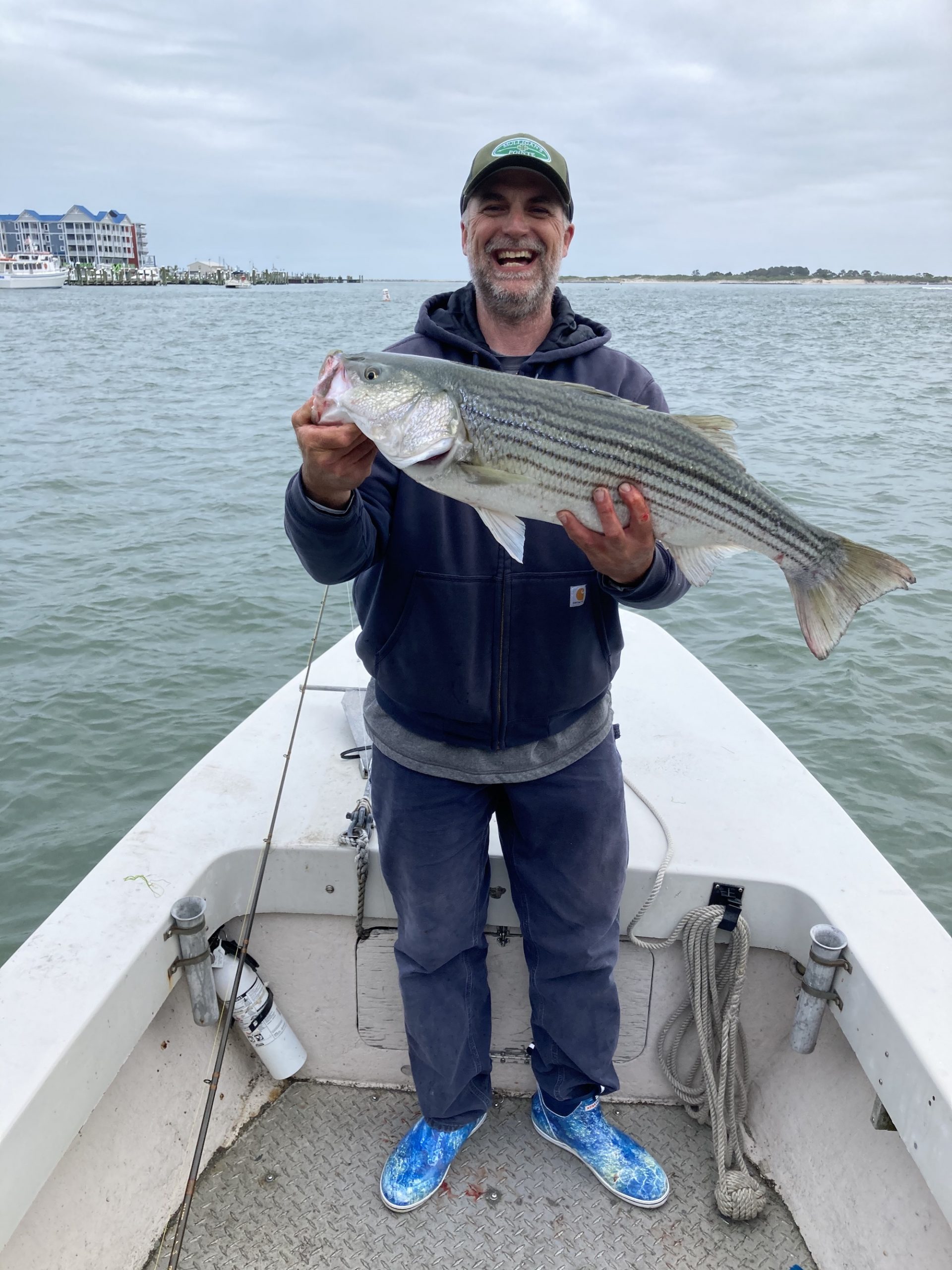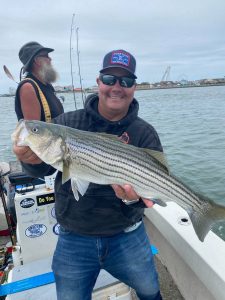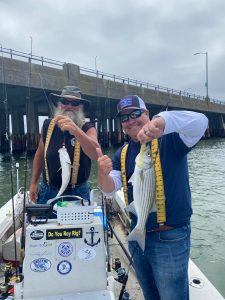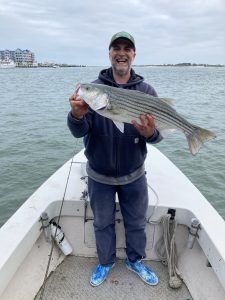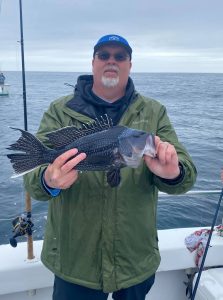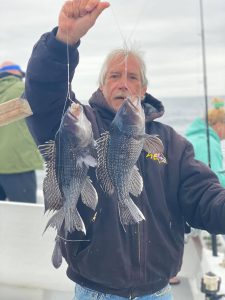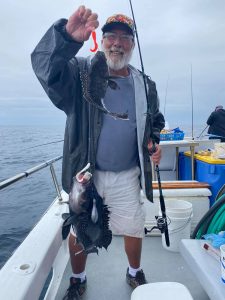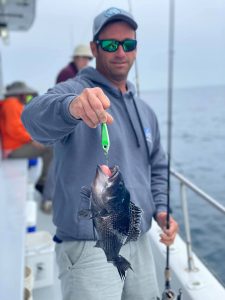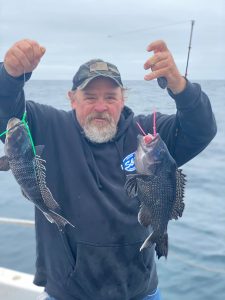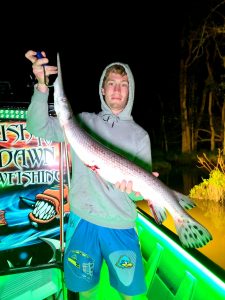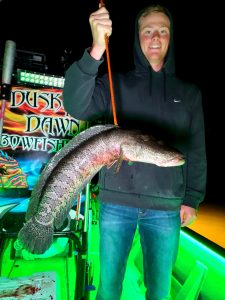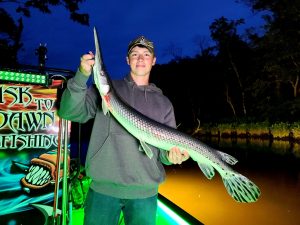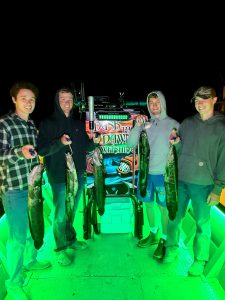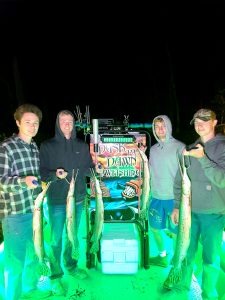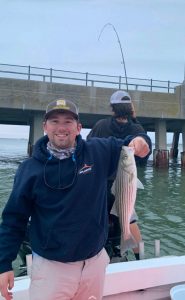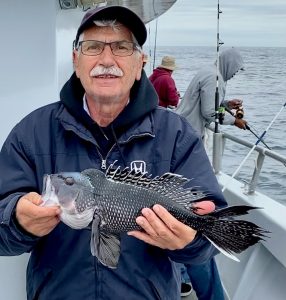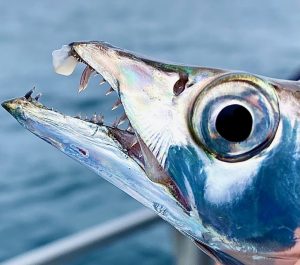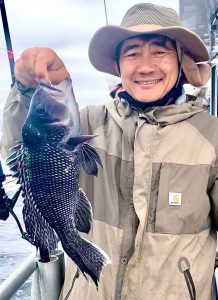***
(And here a further examination of evidence that has caused me to conclude survey boats affect sea bass populations across an area greater than the actual survey. This is my second best example from among dozens of interactions. We Did NOT have a survey impact today.)
***
I posted about a ‘science’ trip last week where I’m trying to document survey equipment, & specifically sub-bottom profiler’s effect, on sea bass feeding. This piece of survey equipment does as its name describes – it penetrates the ocean floor a few meters; shows technicians what is below the sand so it can be mapped for scientists & engineers. A sub-bottom profiler is not as powerful as air cannon sounding equipment. If animals are too close to air cannon – they perish.
No, the sounding/surveying equipment being used off Maryland & Delaware’s coast now, operating in and just beyond permitted wind power boundaries, is much more
quiet than air cannon sounding. It’s incapable of rapid physical harm or death.
But what about slowly?
Why does it have such a noticeable effect on sea bass feeding?
Is it just annoying? ..or does it mimic some giant echolocating predator that pushes sea bass into the reef and off their typical 15 to 30 ft daytime feeding posts.
We could plainly hear survey equipment last week on our go-pro cameras.
Clack ..
Clack ..
Clack ..
This was much too slow for my boat’s equipment. We’re told that much of this professional survey equipment’s frequencies fall far below human & fish hearing ability. Still, our go-pros are hardly as refined as millions of years of evolution and they’re picking up a definite sound.
And for these ultra low frequencies, are we so sure an animal with a lateral line cannot perceive this noise? Sharks?
Do sub-bottom profilers mimic echolocation? How toothed whales such as bottlenose dolphin and sperm whales feed? Are our temperate reef fish simply afraid?
Even bats feed using sound. In fact, in the case of sperm whales many believe they’re capable of stunning prey. A few scientists I’ve spoken with over the years find that idea plausible, others do not. We know 600-some species of pistol shrimp use sound to stun prey.
Could it be only a momentary disorientation of a large squid with a focused noise and – gulp. Dinner. Sad squid. Happy whale.
Regardless what science eventually discovers about marine mammals using sound as a weapon to feed; there’s no debate that odontocetes (the toothed whales) use sound—use echolocation—to hunt their prey.
A curious fact – when offshore whalers first began targeting sperm whales (as inshore baleen species were already becoming more scarce,) those men in the 1800s called them “carpenter whales” for the thwack/thwack/thwack of their built-in/onboard sonar which those iron men could plainly hear through their wooden hulled ships..
We know today that when hunting, sperm whales use their lowest frequencies for long range work and increase both frequency and rapidity of pulses as they near their prey.
I bet that long range pulse sounds a lot like what we heard on our quite inexpensive camera gear.
In Fish Report 5/22/21 I detailed a 2007 experience where sea bass INSTANTLY quit biting when a sub-bottom profiler was turned on at point blank range – and it was instant – turned the bite off “like a switch” because it was a switch.
I also described how the bite had improved for us on 5/20/21 as we tried to video an audible survey impact on this important fishery.
Here is yet another experience I logged in the first, supremely frustrating, year of surveys almost a decade ago…
*******
..Another illustration of survey noise’s effect on sea bass feeding: on July 31st, 2013, I was fishing the Great Eastern artificial reef about 18 NM ESE OC MD near the southern-most portion of the MD wind lease. I could see the Scarlett Isabella closing and watched my clients’ success diminish to absolute-zero when she was approximately 3NM N our position (NM = Nautical Mile – a tad longer than a statue mile.) As my nearest reef that might provide suitable success was either 8NM south or 13NM ESE, I waited for the survey boat to turn north and move its equipment out of range (about 5 to 7 miles before I had any hope clients would have the least success).
Closing to 2NM ENE my position with survey gear in use, no fish at all bit while the Scarlett Isabella was so near. None.
Then, at 10:15, she came full-stop and the bite went ‘wild’ (comparatively). With flounder & sea bass coming over the rail, clients cheerfully exclaimed; “Don’t move Captain, they’re here!” (I, of course, had kept clients over fish all the while.)
A helicopter approached the Scarlett Isabella and landed aboard ship. That’s why she’d stopped. When the helicopter left a while later, the ship came-about and began a new survey leg.
The bite, of course, died completely & at once as they re-started their survey gear.
At 10:40 AM I hailed the Scarlett Isabella on VHF 16 & asked to switch to channel 10. I questioned if they had turned off the sub-bottom profiler while the helicopter was aboard. A few minutes later I was told, “Yes, the sub-bottom profiler was off then.”
********
